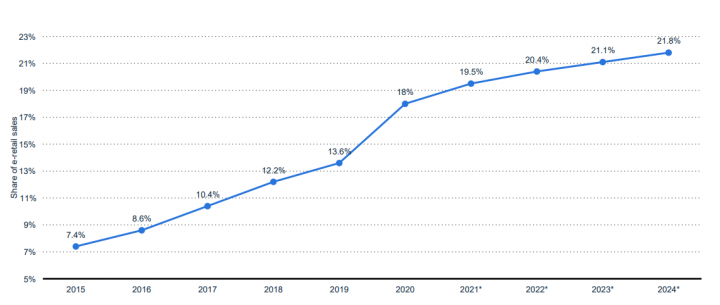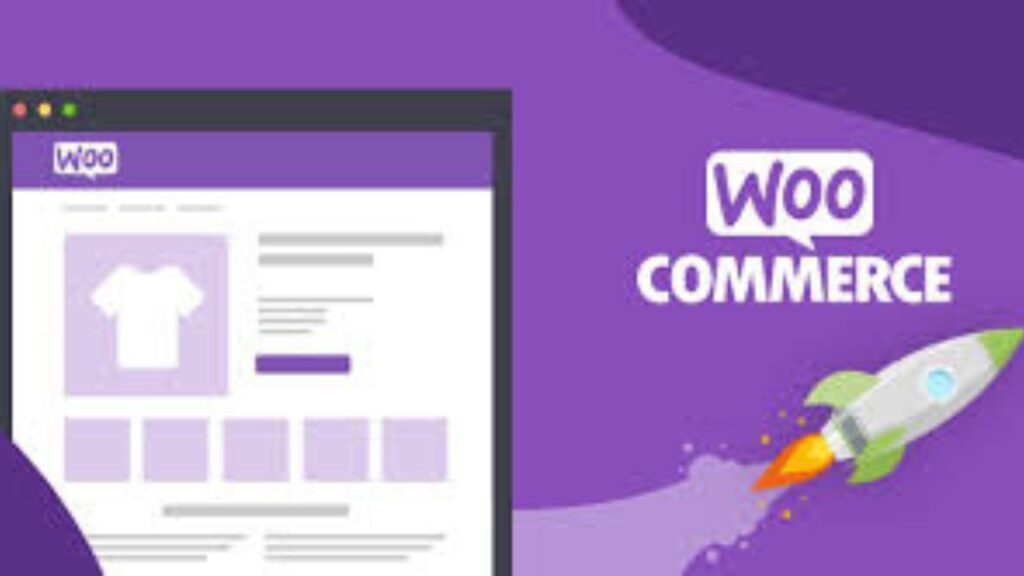Table of Contents
ToggleHow To Design Ecommerce Website In 2024
How To Design Ecommerce Website In 2024. Before knowing this let us know what an e-commerce website is. Today the world has changed so much that at that time we used to spend hours wandering in the market and shopping, but today people are at home and can order their products and there is no need to go even now.
Ecommerce Website is a platform through which a shopper can buy your products online from you, do online transactions, and do online reviews.
What Is Ecommerce

Ecommerce, short for electronic commerce, refers to the buying and selling of goods or services over the internet. It encompasses a wide range of online transactions, including retail purchases, digital downloads, subscription services, and more. Ecommerce started in the year 1960 when many businesses started using Electronic Data Interchange to share their documents.
Gradually the trend of online sharing started increasing and with the advent of eBay and Amazon in the year 1990, people started buying items online from online vendors. Online business jumped the most due to Covid, everywhere was online only, everything else was closed, about 350 crore products were sold online in 2020 and 2021.

What Is Ecommerce Website
An ecommerce website is an online platform where businesses sell products or services to customers over the internet. These websites enable customers to browse through various products, add items to their cart, and complete transactions securely using online payment methods.
An ecommerce website has all the tools needed to transform a physical or brick and mortar store completely online. You can also add payment gateway in it.

How Does An Ecommerce Website Work?
These 9 ways an ecommerce website works.
- Maintain an updated catalog of products or services on your website. This includes adding new items, updating product descriptions and images, managing inventory levels, and categorizing products for easy navigation.
- Monitor incoming orders and process them promptly. This involves verifying payment information, updating order status, generating invoices or receipts, and preparing orders for shipment.
- Ensure secure and reliable payment processing for customer transactions. Integrate payment gateways such as PayPal, Stripe, or others to accept credit/debit card payments, digital wallets, and other online payment methods.
- Coordinate shipping logistics to deliver orders to customers in a timely manner. Determine shipping rates, choose shipping carriers, generate shipping labels, and track shipments to ensure smooth delivery.
- Provide excellent customer support to address inquiries, resolve issues, and assist customers throughout their shopping experience. Offer multiple channels for customer communication, such as email, live chat, or phone support.
- Regularly update and maintain your ecommerce website to ensure optimal performance and security. This includes software updates, security patches, bug fixes, and optimization for speed and user experience.
- Implement marketing strategies to attract visitors to your website, drive sales, and retain customers. This may include search engine optimization (SEO), social media marketing, email marketing campaigns, and online advertising.
- Implement security measures to protect customer data and ensure compliance with data protection regulations (e.g., GDPR). Use SSL encryption, secure payment gateways, and strong password policies to safeguard sensitive information.
- Continuously evaluate and optimize your ecommerce website and processes to enhance the customer experience, increase sales, and stay competitive in the market. Solicit feedback from customers, monitor industry trends, and adapt your strategies accordingly.
Benefits Of Ecommerce Website
There are many benefits of ecommerce website, these are explained further.
1. Global Reach
The reach of a physical store is limited only to our particular area but the reach of an online store is world wide, that is, you can sell your product in Canada even if you are located in India.
Ecommerce websites enable businesses to reach a global audience without geographical limitations. This expands market reach and allows businesses to sell to customers beyond their local area, increasing potential sales opportunities.
You do not need to open your stores at different places, just run your online store from your home or office and get your items delivered worldwide with the help of good shipping and logistics partners.
2. 24/7 Availability
If you have a shop then it has a time to open and close but in online there is no time, you sell your goods here 24 hours. Unlike traditional brick-and-mortar stores, ecommerce websites are accessible 24 hours a day, 7 days a week. Customers can shop at their convenience, anytime and anywhere with an internet connection, providing flexibility and convenience.
3. Lower Startup
Starting an ecommerce startup is very easy and anyone can do it at very low cost, for this you can create a very good ecommerce website by just getting domain hosting and start your online business with very low investment.
Ecommerce businesses often cost less to set up than a brick and mortar (physical) business and can be run from anywhere.
4. Personalized Shopping Experience
Ecommerce websites can utilize customer data and analytics to personalize the shopping experience for individual users. Personalized product recommendations, targeted marketing campaigns, and customized promotions can enhance customer engagement and satisfaction.
5. Scalability and Flexibility
Ecommerce businesses have the flexibility to scale their operations quickly in response to changing market demands and business growth. Ecommerce platforms offer scalability features and tools to accommodate increasing sales volumes, expand product lines, and enter new markets.
6. Helpful In Upselling
You must have often seen on Flipkart and Amazon whenever you search for any product, those sites show you different types of products. Suppose you have brought your red colored Adidas shoes and you have searched on Amazon and Amazon has started showing you how many similar shoes are available.
Then it is possible that you may like some other shoes at the same rate and buy it.
7. Customer Engagement
Ecommerce websites provide various opportunities for customer engagement and interaction, such as product reviews, ratings, live chat support, and social media integration. Building meaningful relationships with customers fosters loyalty, repeat purchases, and brand advocacy.
Read Also-: 10 best tips grow your business using digital marketing
Website Builders
There are several website builders available, each offering various features, templates, and customization options to create a website without the need for coding knowledge. Here are some popular website builders:
- Word Press
- Wix
- Shopify
- WooCommerce
- Weebly
WordPress
WordPress.com is a hosted platform that allows users to create websites using the WordPress content management system (CMS). It offers a selection of free and premium themes, plugins for added functionality, and customization options. You can create a very good website through templates on WordPress. The WordPress platform is used to create millions of websites today.
WordPress is a popular open-source content management system (CMS) that powers millions of websites worldwide. Originally designed as a blogging platform, WordPress has evolved into a versatile platform that can be used to create various types of websites, including blogs, business websites, e-commerce stores, portfolios, and more.

Wix
Wix is a very good platform for beginners, its free plan provides 500 MB storage space which is great for creating a website. If you need more space, you can also take the paid version. You can create your own ecommerce website on Wix with just a template without any coding.
And along with this, many more advanced features are given in Wix like emails, multiple payments methods and cart etc.

Shopify
Shopify is a popular platform specifically designed for creating online stores. It offers a range of customizable themes, built-in payment processing, inventory management tools, and marketing features for selling products online.
You do not even need coding to design your ecommerce website on Shopify. You also get advanced features like Inventory Tracking, Ecommerce SEO Features, SSL Certificates, Shopify Shipping and Payment. Shopify has 4.8 million users who have created ecommerce websites using Shopify.

WooCommerce
WooCommerce is a plugin for WordPress that enables users to add e-commerce functionality to their existing WordPress website. It provides features for product listings, shopping carts, secure payments, and order management.

Weebly
Weebly is a popular website builder that offers a user-friendly platform for creating websites without the need for coding knowledge. It provides a range of tools and features to help individuals, businesses, and organizations build professional-looking websites quickly and easily.

How To Design Ecommerce Website In 2024
You can create an ecommerce website in 2024 by following all these steps:
1. Research and Planning
To create an ecommerce website, first do your research and know who your target customer is and then make your planning. No work can be successful without any planning. Research competitors and analyze their websites to understand industry trends and best practices.
Define your website’s goals, objectives, and key performance indicators (KPIs).
2. Purchase Domain And Hosting
The next step is to purchase your domain and hosting. Purchase your domain with the name you want to open a store. This is very important for branding. You can buy domain and hosting from platforms like Hostinger, Bluehost and Goddaddy etc.
3. Choose the Right Platform
Select an ecommerce platform that suits your needs and budget, such as Shopify, WooCommerce, Magento, or others. Consider factors like scalability, customization options, integrations, and ease of use. We have already talked about Best Ecommerce Website Builders, so you can start your journey by selecting any one of them.
4. Select Responsive Design
The design of your website should be very responsive. Select a suitable theme to design the website. After optimizing it, you can create an attractive website by choosing a template. Ensure your website is mobile-responsive, providing a seamless experience across devices of all screen sizes.
Implement responsive design principles, including flexible layouts, fluid images, and media queries
5. Create Different Pages
Now you have to create all the pages required for your Ecommerce Website. Here you can find Home, Category Page, Product Page, About Us, Contact Us, Search and Listing Results, Cart Page, Checkout Page, Etc. Can create along with this, header and footer also has to be made.
6. Create products list
Make your products list, this is the most important part of the ecommerce website, make it a little carefully, it should include all these parts.
- Product Names And Prices
- Product Images or Videos
- Product Descriptions
- Customer Reviews
- Shopping Cart Functionality
- FAQ Section
7. Add payment method
Add payment method, it is very important that you can use any method for payment like PayPal, credit card, debit card, add any 2, 3 methods.
8. SEO
You can do SEO of all the pages of your e-commerce website, do SEO of your page through both on page SEO and off page SEO, this will help your website to rank on Google.
Under this, you have to properly implement Meta Tags, Descriptions, Alt Tags of Images, Keywords In Product Descriptions, Easy Navigation, Sitemaps, Schema, etc. of all your pages.
Read also-: 9 Best Way Content Marketing Is Important.
Conclusion
Creating an ecommerce website is a great way to take your offline business online. In this blog, we learned what is an ecommerce website and how it is designed by using platforms.
In today’s blog, we discussed many topics related to Ecommerce Website and understood what is Ecommerce Website, how it works, what are its benefits and how to design an Ecommerce Website.
Hopefully, you would have learned something new from today’s blog and now you will also be ready to start selling products online by creating your own e-commerce website.
If you also want to take your offline business online and learn Digital Marketing in Hindi then click on the button below and join us.
